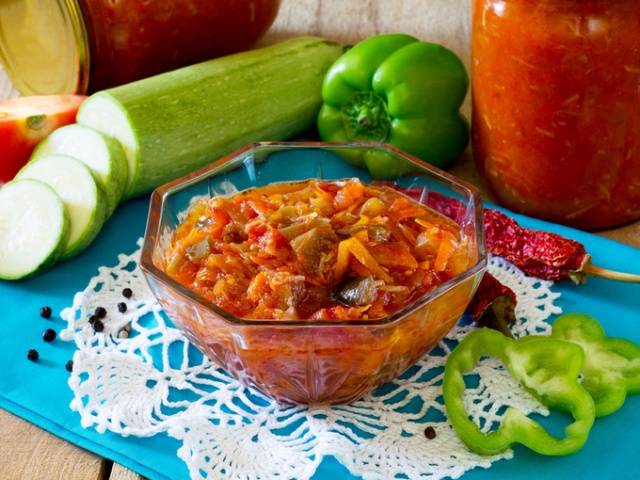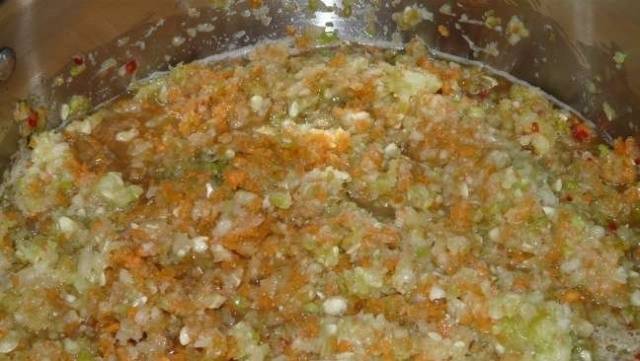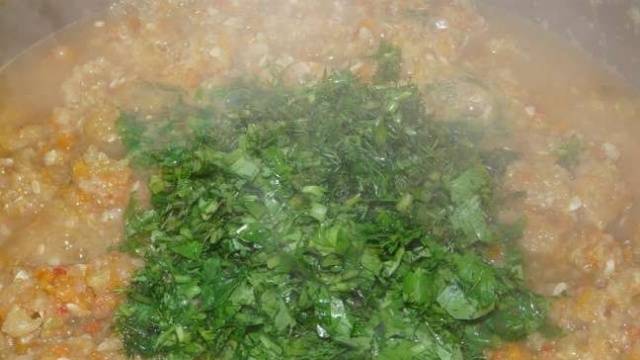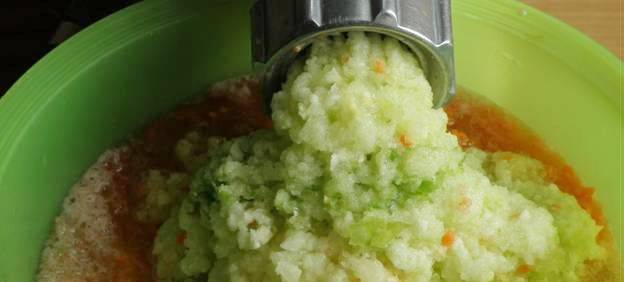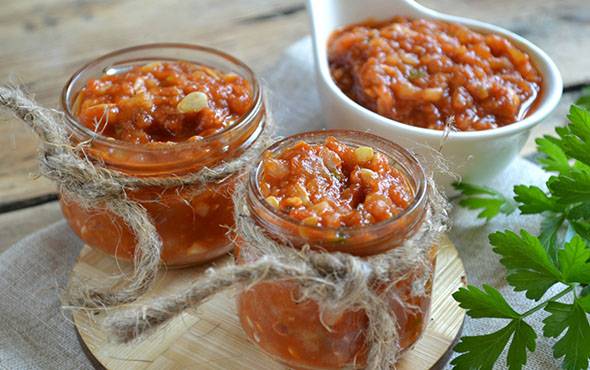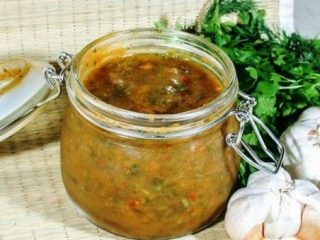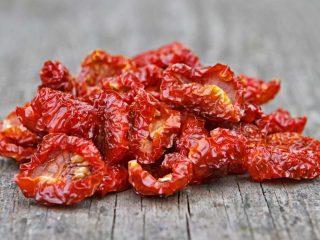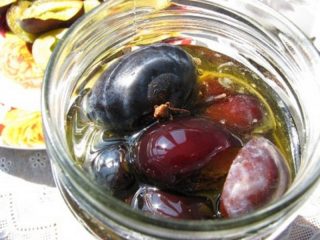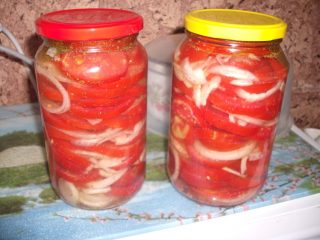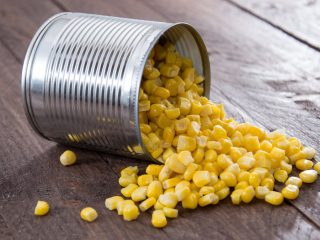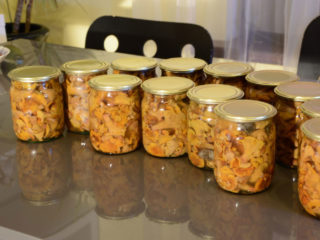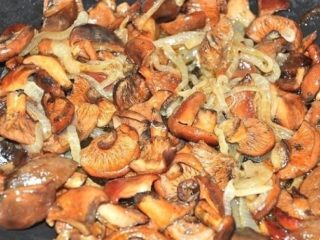Content
Good housewives will definitely make sure that among the preparations for the winter there are not only various salads, pickles, snacks and concentrates for preparing first and second courses, but also seasonings, with the help of which you can significantly diversify the table in the winter and saturate it with much-needed spicy food. and spicy aromas.
One of the most famous and beloved seasonings is adjika. But real Caucasian adjika traditionally distinguished by such spiciness, thanks to the use of different peppers, that not every Russian person will like it. But its spicy aroma cannot but attract the attention of gourmets. This problem was solved quite a long time ago. Russian culinary specialists, inexhaustible in their invention, came up with the idea of adding many neutral ingredients to adjika, which would soften the sharpness and bitterness of the traditional seasoning. Thus, adjika was born from zucchini with apples for the winter. This preparation has several varieties, and this article will be devoted to this type of adjika.
Adjika: its composition and properties
Adjika, as a seasoning, appeared in the Caucasus in Abkhazia, and translated from the local language the word means “spicy salt” or “salt ground with spices.”
There is a legend that adjika was invented by shepherds grazing flocks of sheep in the mountains. The owners of the sheep provided them with salt, which was intended for the animals so that, in an attempt to quench their thirst, they would absorb more grass and thereby gain weight faster, bringing more benefit to their owners. Salt in those days was expensive, and to prevent shepherds from stealing it, hot pepper and other spices were added to it, hoping to scare people away. But it turned out exactly the opposite - the shepherds added even more various ground dry herbs to the salt and pepper, and over time this turned into a seasoning called adjika, without which it is now difficult to imagine the table of any representative of the Caucasian peoples.
Adjika traditionally includes many components, but the obligatory components are coarse salt, red hot pepper, coriander seeds, dry garlic, dill and suneli hops.
The color of adjika is determined by its composition and can be red, orange, brown or green, depending on the color of the pepper and other spices used. It is capable of giving dishes a special taste and aroma: hot, spicy and bittersweet.
Traditional recipe for adjika from zucchini with apples
This recipe is intended for lovers of classic adjika, who, due to certain stomach problems, can no longer cope with its spiciness, or simply for lovers of spicy, but at the same time delicate dishes. In addition, the resulting dish can no longer be called a seasoning - rather, it turns into a light independent snack that carries all the aromas of the fragrant summer heat.
To begin, try finding, thoroughly rinsing and drying the following ingredients:
- Zucchini – about 5 kg;
- Carrots, bell peppers and sour apples - 1 kg each;
- Garlic – 200 g №
- Hot red pepper – 10-15 pieces;
- Greens to your taste, but it is advisable that at least 50 grams of dill, cilantro, basil, coriander seeds, and parsley be present.
You must definitely look for these components:
- Vegetable oil – 500 ml;
- Table (or better yet, apple) vinegar – 200 ml;
- Granulated sugar – 200 ml;
- Coarse salt, preferably rock salt – 5 tbsp. spoons
To prepare adjika for the winter, you need to remove the skin from zucchini, apples and carrots. Remove the core and stems from sweet and hot peppers and apples. Peel the carrots and garlic. Wash the greens well and dry, removing all dry and spoiled parts.
Cut all the prepared vegetables and apples into pieces so that they can be conveniently passed through a meat grinder. Starting with the zucchini, chop all the pieces of vegetables using a meat grinder. Grind the zucchini into a separate bowl and while you are mincing the remaining vegetables, put the ground zucchini in a colander and let the excess juice drain a little. This technique will help make adjika more magnificent.
Chop the greens very finely with a sharp knife.
It is the meat grinder that is able to create the most suitable consistency for adjika from vegetables and apples with occasional small pieces.
Mix the resulting vegetable mass with sugar, salt and butter, place over medium heat and bring to a boil. Then simmer for 30-40 minutes from time to time, stirring the mixture with a wooden spatula.
At the same time, at this moment, start sterilization of jars with lids.
Add vinegar to the adjika and keep on low heat for at least another five minutes.
Immediately place the hot adjika into small sterilized jars, roll them up and, turning the jars upside down, wrap them in a blanket.
The finished seasoning can be stored for storage only the next day, protecting adjika from exposure to bright light if possible.
Adjika from zucchini with apples and tomatoes
IN composition of traditional Caucasian adjika tomatoes were never included, and its red color was determined only by hot red and sometimes sweet pepper. In Russia, for many years it has been customary to prepare adjika using tomatoes to soften its sharpness and bitterness. Therefore, the recipe for adjika made from zucchini with apples, which also includes tomatoes, is especially popular.
To make adjika according to this recipe, prepare the following ingredients:
- Zucchini – 2 kg;
- Bell pepper – 0.4 kg;
- Tomatoes – 0.5 kg;
- Carrots – 0.3 kg;
- Sour apples (Antonovka type) – 0.3 kg;
- Hot red pepper – 2 pieces;
- Garlic - one head;
- Cilantro, purple basil, dill and parsley - 50 grams of each herb;
- Granulated sugar – 2 large spoons;
- Salt – 3 teaspoons;
- Table vinegar 9% – 100 ml;
- Vegetable oil (preferably olive) – 100 ml;
- Optionally, ground black pepper.
All vegetables, herbs and apples are thoroughly washed, dried, removed from excess parts and cut into pieces suitable for processing using a meat grinder.
To begin with, all cooked vegetables, herbs and apples are ground using a meat grinder.
All spices, salt, sugar and butter are added to the chopped vegetables with apples.
In the future, adjika according to this recipe can be prepared both in a cauldron with a thick bottom and in a slow cooker.
If you have a multicooker, then all the products are transferred to a bowl, vinegar is added to them, everything is mixed well. Then the lid is closed and the “Extinguishing” mode is turned on for 1 hour. After the beep sounds, the adjika is ready and can be placed into jars.
If there is no multicooker, then the ground products are placed in a bowl with a thick bottom and simmered for about 40-50 minutes. Finally, vinegar is added to them, and the whole mixture is heated for another 10 minutes.
When hot, the finished adjika must be quickly placed in sterilized jars, rolled up and wrapped. Adjika prepared according to this recipe can be stored even in an ordinary kitchen cabinet.
Try to prepare adjika according to one of the recipes described above, and you will not be able to help but appreciate the combination of the neutral taste of zucchini with the spiciness of pepper, the sourness of apples and the piquancy of green aromatic herbs. All this taken together creates an incomparable, amazing taste that you can surprise not only your family members, but also your guests at the holiday table. Adjika goes especially well with fried meat and potatoes.
